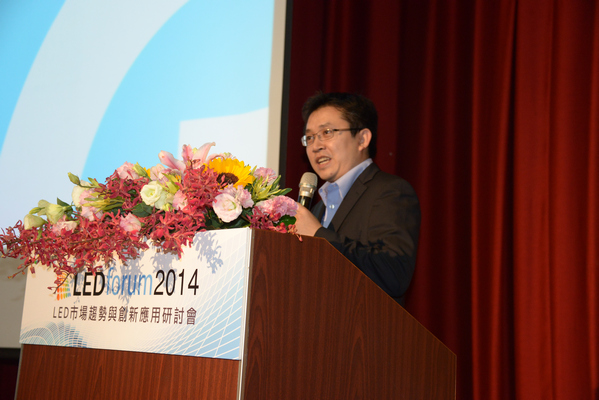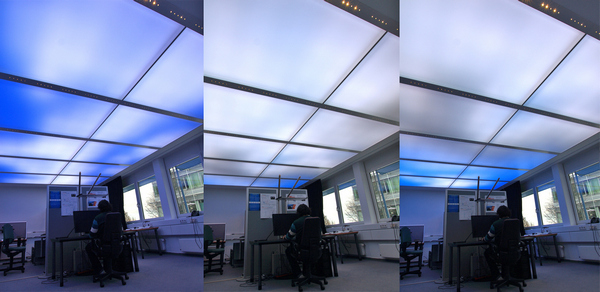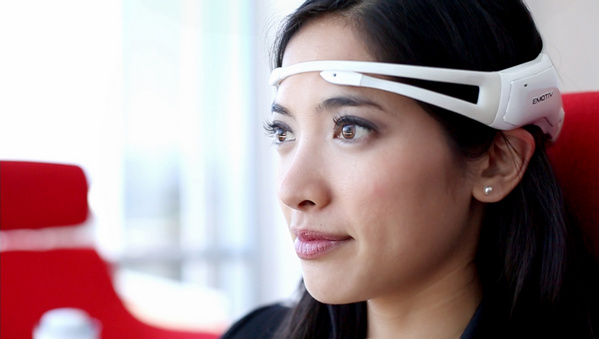Smart lighting emerged in recent years as a promising technology that has attracted investments from many institutes and LED companies, but further R&D is required before the technology can become truly human centric, said Pei-Ting Chou, Manager, Electronics and Optoelectronics Research Laboratories, ITRI, at LEDforum 2014, which was held on Oct. 24, 2014 in Taipei, Taiwan.
Lighting manufacturers’ interest in the conceptual technology can be summed up as the fear of falling behind competition. “Many smart lighting products are still conceptual products, but it will be difficult for us to catch up when it becomes an actual (mass produced) product,” said Chou.
 |
|
Pei-Ting Chou, Manager, Electronics and Optoelectronics Research Laboratories speaking at LEDforum 2014 in late October 2014. (LEDinside) |
Smart lighting is defined by the use of lighting controls to adjust brightness and lighting control according to sources, such as Wikipedia. The new lighting technology can be classified into light source, sensor technology and control. Integration of the three technologies usually results in better lighting controls, explained Chou.
Under the ISO/TC 274 business plan, the paradigm shift in the lighting industry towards LED technology is a prerequisite to the digitalization of lighting, followed by the big leap towards smart lighting and finally human centric lighting. Human centric lighting is defined by LightingEurope as a type of lighting that can benefit the biological, emotional, health, or wellbeing of people. This is achieved by dimming the smart light source, most likely an LED, to mimic the levels of sunlight throughout the day.
“Real smart lighting should be connected to people, and integrate sensors and control technology,” said Chou. Current smart lighting has not reached this stage yet, he added.
 |
|
Pei-Ting Chou, Manager, Electronics and Optoelectronics Research Laboratories seen up close at LEDforum 2014 in late October 2014. (LEDinside) |
Advancements in LED technology calls for change in color standards
The lighting industry’s embrace of LED technology has called to attention a need to revise color standards that were previously based on fluorescent light performance. For instance, the Kruithof Curve formulated by Dutch physicist Arie Kruithof in 1941 to demarcate color temperatures people found pleasant or unpleasant was based on fluorescent lights, which some studies have indicate may no longer be applicable with LED lights.
An experiment by National Institute of Standards and Technology (NIST) illustrates this. The institute took two to three years to build a smart lighting system consisted of 22 types of Philips Color Kinetic LEDs in a room, which enabled researchers to replicate daylight, DRL Lights, or even fluorescent tubes color temperatures. By tuning the LED lights to different color temperatures, researchers found people preferred lighting colors that fell below the Kruithof Curve and Planckian Locus. A reddish hue white light was the most preferred color. “The research shows current lighting color measurements based on color temperature or CRI still have room for improvements because of advancements in LED technology,” said Chou. Accurate lighting color temperature can be important in smart lighting, since different color temperatures can affect people’s health, energy levels and productivity.
 |
|
Fraunhofer Institute LEiDs GmbH has developed ceiling tiles using RGB and white LEDs to simulate a sky with moving clouds. (Photo Credit: Fraunhofer Institute LEiDs GmbH) |
Lighting impact on health
Before truly human centric lighting can be developed, further research needs to be conducted on the relation between lighting and health. The impact of light on human health include in the form of light radiation, vision, circadian rhythm. There are still some unresolved issues including impact on hormone secretion, the relation between light exposure and cancer, and lighting’s disruption of circadian rhythm that require further research.
Known health hazards from LED light exposure include retina damage from over exposure to LEDs blue light, especially under the wavelength of 300 to 700 nanometers. The IEEE PAR 1789, for example, recommends the practice for modulating current in high brightness LEDs for mitigating health risks to viewers. Additionally, the LED light’s strong glare and flicker can causes discomfort to viewers, and even trigger migraines among specific groups of people, specifically those with autism.
 |
|
Accenture and Philips have co-developed this conceptual brainware device Emotiv in August 2014 that enables users to control smart lights by thinking. (Photo Credits: Philips) |
Studies are still underway to determine the exact relationship between lighting and human health, especially in stimulating brain hormone secretion. The secretion of dopamine during the day for instance can keep people alert and is related to muscle coordination, serotonin is important for impulse control, while cortisol secretion affects a person’s stress response, explained Chou.
Institutes and companies are already developing dynamic lighting applications that are looking into human centric approaches. Fraunhofer Institute LEiDs GmbH has developed ceiling tiles using RGB and white LEDs to simulate a sky with moving clouds, while a Japanese manufacturer has developed cherry blossom pink lighting with different color temperatures to keep people more alert during the day or relaxed at night.
Smart lighting’s health related applications can even extend outside of lighting into brainwave control, as seen in Philips Emotive application which uses a brain wave control device to switch on or turn off lights. Other applications include merging smart lighting with Internet of Things (IoT) to develop lighting with GPS, or data transmission technology, such as Li-Fi. All these smart lighting applications show the technology’s potential, and the evolution towards human centric lighting.
(Author: Judy Lin, Chief Editor, LEDinside)





 CN
TW
EN
CN
TW
EN









